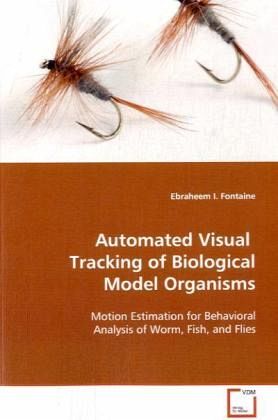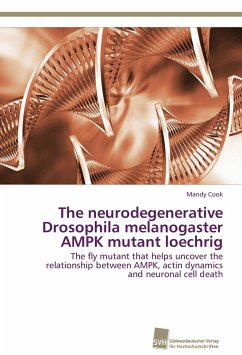
Automated Visual Tracking of Biological Model Organisms
Motion Estimation for Behavioral Analysis of Worm, Fish, and Flies
Versandkostenfrei!
Versandfertig in 6-10 Tagen
39,99 €
inkl. MwSt.

PAYBACK Punkte
20 °P sammeln!
Capturing the detailed motion and behavior ofbiological organisms plays an important role in awide variety of research disciplines. However, theefficient and rapid quantification of these complexbehavioral traits imposes a major bottleneck on theelucidation of many interesting scientific questions.To address this constraint, this book develops asuite of model-based visual tracking algorithms thatoperate in a high-resolution manner needed for aproductive synthesis with modern genetic approaches.The method is used to track the position and shape ofmultiple nematodes during mating behavior, zebra...
Capturing the detailed motion and behavior of
biological organisms plays an important role in a
wide variety of research disciplines. However, the
efficient and rapid quantification of these complex
behavioral traits imposes a major bottleneck on the
elucidation of many interesting scientific questions.
To address this constraint, this book develops a
suite of model-based visual tracking algorithms that
operate in a high-resolution manner needed for a
productive synthesis with modern genetic approaches.
The method is used to track the position and shape of
multiple nematodes during mating behavior, zebrafish
of different ages during escape response, and fruit
flies during take off maneuvers. These applications
demonstrate the modular design of this model-based
visual tracking system. In contrast to other
approaches, which are customized to a particular
organism or experimental setup, my approach provides
a foundation that requires little re-engineering
whenever the experimental parameters are changed.
biological organisms plays an important role in a
wide variety of research disciplines. However, the
efficient and rapid quantification of these complex
behavioral traits imposes a major bottleneck on the
elucidation of many interesting scientific questions.
To address this constraint, this book develops a
suite of model-based visual tracking algorithms that
operate in a high-resolution manner needed for a
productive synthesis with modern genetic approaches.
The method is used to track the position and shape of
multiple nematodes during mating behavior, zebrafish
of different ages during escape response, and fruit
flies during take off maneuvers. These applications
demonstrate the modular design of this model-based
visual tracking system. In contrast to other
approaches, which are customized to a particular
organism or experimental setup, my approach provides
a foundation that requires little re-engineering
whenever the experimental parameters are changed.












